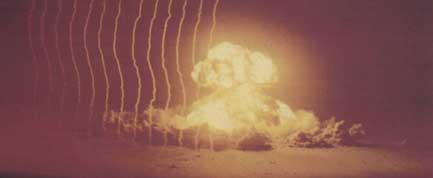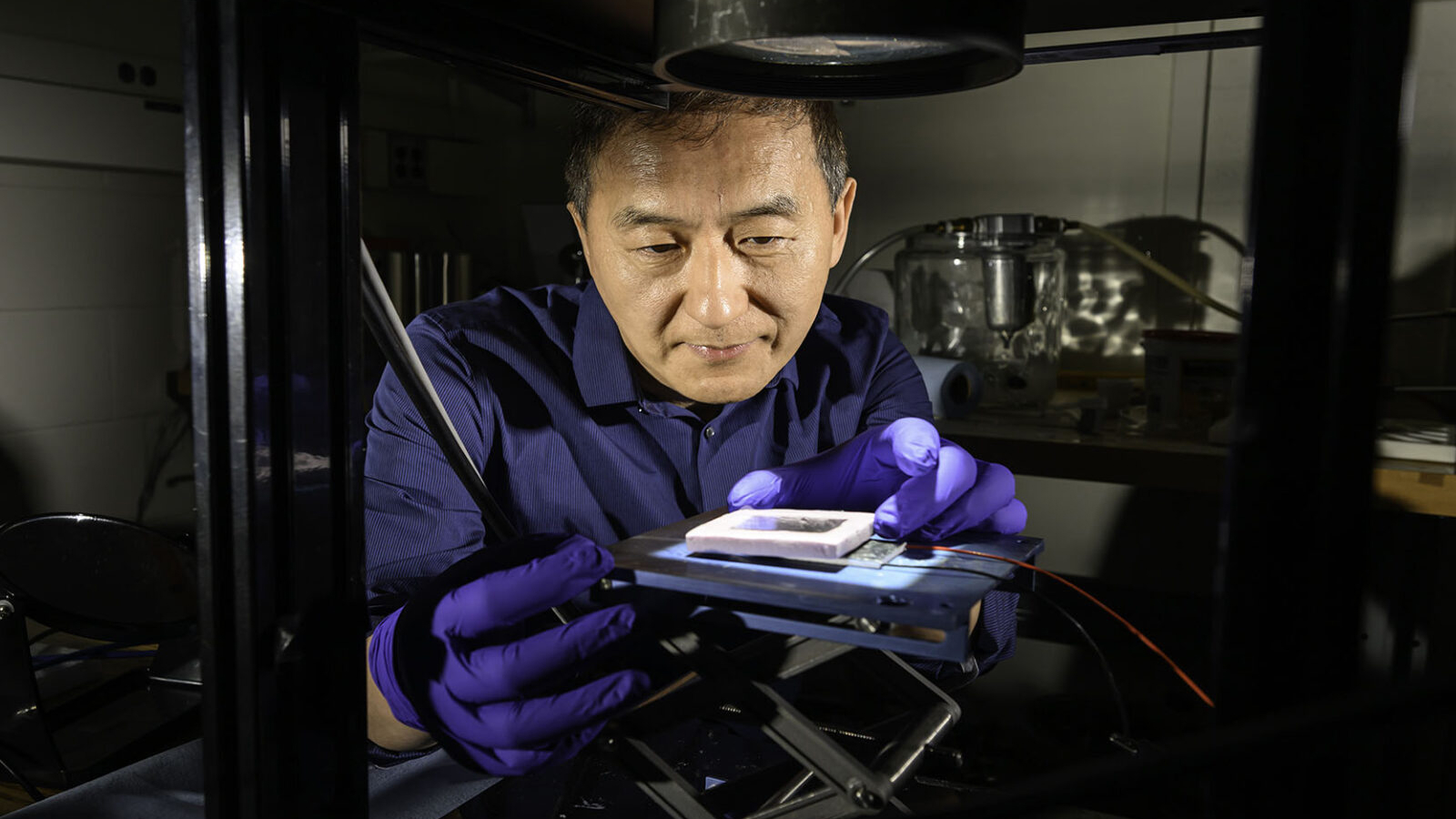Why It's So Hard to Make Nuclear Weapons

It took only a matter of hours last week for the United Nations’ nuclear watchdog agency to shoot down a news report that its experts had drafted a secret document warning that Iran has the expertise to build a nuclear bomb.
"With respect to a recent media report, the IAEA [International Atomic Energy Agency] reiterates that it has no concrete proof that there is or has been a nuclear weapon programme in Iran," the European-based agency said in statement.
The report surfaced as a number of experts voiced concerns and suspicion about the potential threat posed by Iran’s nuclear energy program, reported to be one factor in President Obama's recent decision to abandon a long-range missile defense site in Eastern Europe as a way to curry favor with Russia, in turn with an eye toward getting Russia to help thwart Iran's nuclear ambitions.
Amid all the fear and confusion, one fact remains: It is notoriously difficult to build an advanced nuclear weapon.
“It's a very challenging goal,” Leonard Spector, deputy director of the James Martin Center for Nonproliferation Studies, said today in a telephone interview.
“I'd say they're at least a good year or more away from developing a basic weapon," Spector said of Iran. "They need to fabricate a bomb, and to get it on a missile warhead is tricky.”
The easy part
Get the world’s most fascinating discoveries delivered straight to your inbox.
There is more than enough information out there explaining how to produce a nuclear weapon. This became obvious in 1967 after three newly minted physics professors with no nuclear weapons experience were able to draw up a credible design for a nuclear bomb. The physicists had been hired by researchers at Lawrence Livermore National Laboratory to assess the difficulty of producing a nuclear weapon, a project known as the Nth Country Experiment. Russia was the second nation to develop nuclear weapons after the Unites States. So the question was: Who would be the Nth country?
However, acquiring the necessary materials to fuel the bomb, such as weapons-grade uranium, proved to be difficult at the time.
Weapons-grade uranium, or isotope U-235, is a highly unstable form that makes up less than 1 percent (.7 percent) of the concentration of uranium ore that is dug up. The Federation of American Scientists estimates that uranium needs to be refined to a concentration of at least 80 percent U-235 to be weapons grade, though upwards of 90 percent is preferable.
Other significant hurdles remain, related to everything from enriching the material, to building a successful detonation device, to delivering it all with conventional missiles that may not be able to carry the extra weight of a nuclear warhead.
Enriching uranium
A popular way of achieving weapons-grade uranium is by using a gas centrifuge process, whereby a converted gaseous form known as uranium hexafluoride is released into a spinning cylinder. The force generated by the rotating cylinder separates U-235 isotopes from the heavier U-238 isotopes.
Hans Kristensen, director of the Nuclear Information Project at the Federation of American Scientists, says uranium enrichment is now less of a barrier for nations like Iran should they decide to begin producing weapons.
“If Iran lined up all their centrifuges and ran it long enough, after a year or so, they can enrich it to a point where it is weapons grade,” Kristensen told LiveScience.
U-235 differs from U-238 in that it can undergo an induced fission chain reaction, a process that begins with using a subatomic particle known as a neutron to split the atom of a radioactive material like uranium into smaller pieces. The destructive power of a nuclear bomb is unleashed when an atom that has been split ends up sending its neutrons slamming into other atoms and splitting them, which in turn creates the chain reaction.
The tricky part
In order to sustain the type of chain reaction necessary for a bomb explosion, the atoms need to be held in a modified state known as “supercritical mass” so that more than one of the free neutrons from each split hits another atom and causes it to split. A supercritical mass is formed in a uranium bomb by initially storing the fuel as separate subcritical masses to prevent the bomb from detonating too early, and then joining the two masses together. The bomb also needs to be designed to allow enough of the chain reaction to take place before the initial energy from the explosion causes the bomb to fail.
“Little Boy,” the first nuclear bomb that was dropped on Hiroshima during WWII, was fueled by uranium and detonated with a force equivalent to about 15 kilotons of TNT, killing as many as 140,000 people.
But a major problem with uranium bombs, Kristensen said, is the fact that the material happens to be the world’s heaviest naturally occurring element (twice as heavy as lead). According to the Union of Concerned Scientists, a nuclear bomb needs about 33 pounds (15 kilograms) of enriched uranium to be operational. The bulkiness of other bomb materials also make it harder to apply the technology to existing long-range missile systems.
Kristensen says that a nuclear weapon fueled by plutonium would solve this problem since the required materials are lighter. For example, the U.S. Department of Energy estimated that about 9 pounds (4 kilograms) of enriched plutonium or Pu-239 would be enough to build a small nuclear weapon, though some scientists believe that 2 pounds (1 kilogram) of Pu-239 would suffice.
Plutonium bombs are detonated using an “implosion” method, where enriched plutonium is kept in a ball-shaped chamber and surrounded by explosives. Once detonated, the force of the explosives sends a shock wave that momentarily compresses the material into a supercritical mass. A separate neutron source at the center is then released at just the right moment to trigger a chain reaction.
“A lot of countries that develop the capability to make uranium bombs later get interested in plutonium bombs," Kristensen said. "You can fit them into smaller weapons and that allows you to achieve a much longer range with the missiles.”
Plutonium's problems
Using plutonium to make a bomb presents its own difficulties, however. For instance, “you have to build a huge, expensive chemical processing facility that also happens to be very dirty to extract, purify and compress the plutonium so it would fit into a nuclear warhead,” Kristensen explained.
Scientists would also have to devise the nuclear warhead, a task Kristensen says that even nations with established nuclear weapons programs have found to be “very tough.”
“Warheads are complicated little machines,” Kristensen said. “The entire detonation process happens within a tiny fraction of a second so the hard part is constructing a warhead with reliable separation capabilities throughout the various stages.”
Other challenges include developing a missile guidance system and, if the missile will soar into space en route to its destination, a re-entry body to house the warhead and protect it from the extreme temperatures encountered as it travels back into the atmosphere.
“It’s not enough to have the enrichment capability to produce weapons grade uranium or plutonium.” Kristensen said. “There’s a real gap from the point where you can enrich something to a degree needed to where you are building a warhead and saying we now have that technology.”
A recent report by the EastWest Institute, a non-profit think tank, estimated that Iran is about one to three years away from being able to produce a weapon. Spector thinks such a time frame is still reasonable enough for the United States to dissuade Iran from continuing down that path.
“All the really dangerous actions that Iran can do, haven’t been done," he said. “They do not appear to be manufacturing parts or developing designs for an advanced nuclear weapon. So if the U.S. can strike a deal with them where both sides can find some satisfaction, it may be enough to end the crisis.”
- The Greatest Explosions Ever
- Video: Bangs in Slow Motion
- Top 10 Ways to Destroy Earth
